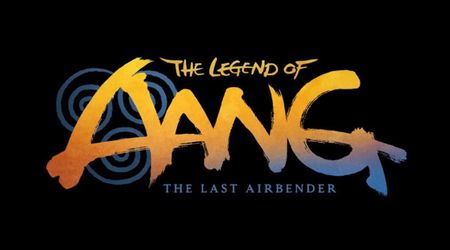'Desert One': What was Operation Eagle Claw, why was it so monumental for American history?

Forty years ago, in April 1980, President Jimmy Carter, in the final year of his first term as the President of the United States, gave the go-ahead for a risky mission to rescue 52 embassy staff held captive at the Embassy of the United States in Tehran, Iran. The hostage crisis was a result of a diplomatic standoff between Iran and the United States. Rather than successfully rescuing the hostages, the mission failed and resulted in casualties of US servicemen, with Iran's supreme leader, Ayatollah Ruhollah Khomeini, gloating over the failure as an "act of God" to protect Iran and his new government.
Many analyses over the years pointed out to flaws right from the planning stage of Operation Eagle Claw as it was named. A new documentary, 'Desert One', uses archival sources and unprecedented access to key players on both sides to examine what went wrong. Here is a look at the events that transpired that led to a historic change in the country. For one, Carter lost his reelection bid to Ronald Reagan that same year.
The Iranian hostage crisis
In November 1979, Iranian college students belonging to the Muslim Student Followers of the Imam's Line, who supported the Iranian Revolution, took over the US Embassy in Tehran, keeping 52 American staff members as hostages. For Iran, it was seen as an act against the United States and its influence in the country, and the US's perceived attempts to undermine the Iranian Revolution, as well as the US's longstanding support of Mohammad Reza Pahlavi, the Shah of Iran, who was overthrown in 1979. After Pahlavi was overthrown, he flew to the US to seek cancer treatment. When Iran demanded his return in order to stand trial for crimes that he was accused of committing during his reign, the US refused, and Iran saw the decision to grant him asylum as American complicity in those atrocities. The Iranian hostage crisis could be seen as the precursor to the poor relations between the two countries today and led to the first implementation of American economic sanctions against Iran.
Operation Eagle Claw

President Jimmy Carter was under a lot of pressure to respond to the crisis and help bring to safety the 52 American citizens held in the Embassy in Tehran. According to The Atlantic, planning, and practice for a rescue mission had been going on in secret for five months, but it had always been regarded as the last resort, potentially because of the negative outcomes of the Vietnam War. The Atlantic also says, "Three times in the past five months, carefully negotiated secret settlements had been ditched by the inscrutable Iranian mullahs, and the administration had been made to look more foolish each time."
During this time, American military commanders -- including General David Jones, the chairman of the Joint Chiefs of Staff Colonel Charlie Beckwith, the creator of Delta Force, the Army’s new, top-secret counterterrorism unit -- refined a plan for a possible rescue mission in an ambitious endeavor that included all four branches of the US armed forces -- the Army, the Navy, the Air Force, and the Marines. Training exercises were conducted to evaluate the troops and the equipment to be used. The plan was this: American helicopters and C-130 aircraft would rendezvous on a salt flat -- code-named Desert One and hence the name of the documentary -- which lay 200 miles southeast of Tehran. There, the helicopters would refuel from the C-130s and pick up combat troops. The helicopters would then transport troops to the mountain location from where the actual rescue mission would be launched the following night. Forces were deployed throughout Oman and the Arabian Sea. Operation Eagle Claw officially began on April 24, 1980.
What went wrong?

The very first step of the rescue mission went fine enough -- the forces were able to secure the Desert One landing zone, though the operation was complicated by the passage of a bus on a nearby road. The area was initially thought to be no man's land and more than 40 Iranians were detained by ground forces in an effort to preserve operational security. Eight Navy helicopters were sent from the USS Nimitz, however, two experienced mechanical failure and could not continue. Additionally, a low-level dust storm that was not forecasted severely reduced visibility, leading to the remaining six helicopters landing at Desert One more than 90 minutes late. At the landing zone, another helicopter was deemed unfit for service.
In the many scenarios rehearsed, it was determined that six helicopters were necessary to carry all the men and equipment from Desert One to all the hide sites that followed, and so the decision was made to abort the mission due to lack of lift and insufficient time to continue the mission. As the forces were leaving and refueling operations were going on, a helicopter was being guided into position off the nose of a C-130 full of fuel. The ground guide was pushed backward by the prop-blast and the blowing sand created a “brownout." The helicopter moved forward towards the ground guide and clipped the C-130 with its rotor. The resultant explosion lit up the Iranian night sky, destroying both aircraft and killing five air force personnel and three marines. The remaining troops were quickly evacuated by plane, leaving behind several helicopters, equipment, weapons, maps, and the dead.
Aftermath

In the early hours of April 25th, President Carter announced the rescue attempt and accepted personal responsibility for its failure. The embassy hostages were subsequently scattered across Iran to make a second rescue attempt difficult. Iranian Army investigators found nine bodies, eight Americans, and one Iranian civilian.
The official investigation by retired Chief of Naval Operations Admiral James L Holloway III into the failure of the mission concluded that the weaknesses of Operation Eagle Claw arose from a lack of coordination between the military services, evidenced by the compartmentalized training and inadequate equipment maintenance. Following this, the armed forces embraced the "joint doctrine" under which it operated in the late 20th and early 21st centuries as Operation Eagle Claw ushered in a rebirth of special operations forces within the US military. The lessons of Eagle Claw led to the establishment of US Special Operations Command (SOCOM) as a functional combatant command with service-like responsibilities to man, train, and equip special operations forces from every service. This was also the first mission for US Army's Delta Force and this led to the development of elite counterterrorism forces such as Seal Team Six.
At the time, however, the failed rescue attempt was a major embarrassment for Jimmy Carter and the country. Ayatollah Ruhollah Khomeini condemned Jimmy Carter, saying, "Who crushed Mr. Carter's helicopters? We did? The sands did! They were God's agents. Wind is God's agent ... These sands are agents of God. They can try again!"
'Desert One' will be available to stream on virtual theatres on August 21.










